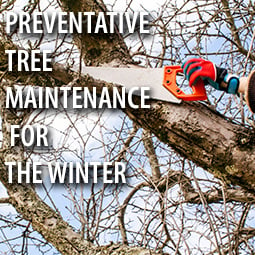 One of the many nice things about having an artificial grass lawn is that it looks as lush and vibrant in the middle of winter as it does the rest of the year. There’s no reason your entire yard shouldn’t be just as attractive. Winter offers its own opportunities when it comes to plant-based eye appeal, and many provide a beautiful counterpoint to your summer “look” because they’re so different.
One of the many nice things about having an artificial grass lawn is that it looks as lush and vibrant in the middle of winter as it does the rest of the year. There’s no reason your entire yard shouldn’t be just as attractive. Winter offers its own opportunities when it comes to plant-based eye appeal, and many provide a beautiful counterpoint to your summer “look” because they’re so different.
If you’re short on space, focus on trees, shrubs, and perennials that will give you multi-season interest. That way you’ll get maximum show per square foot. Even if you have plenty of room, why not choose plants that are attractive in multiple ways? There is no shortage of options here.
Shrubs such as cotoneaster, viburnum, pyracantha, and rugosa roses all produce cheerful clusters of berries in colors that range from blue to purple, orange to red. The berries can last all winter long – if your feathered friends don’t snitch them.
What will warm up your view even on the gloomiest day?
Traditional evergreens such as juniper, holly, cypress, spruce, etc. come in large sizes to use as living fences and backdrops for other plantings. They also come in more petite hybrids just right for a focal point or two. Look for variation in leaf color and texture.
Broadleaf evergreens such as rhododendrons and azaleas also give your garden year-round structure, whether you use them along your foundation or elsewhere. For more creative design, consider “evergreens” that are gray and have very different leaf shapes -- lavender and many types of artemisia, for example. Nearly all broadleaf evergreens offer a warm-weather bonus of colorful (and often fragrant) blossoms.
But who needs leaves, anyway?
Several types of trees and shrubs reveal an entirely different side of themselves once their leaves drop in the fall. Some have colorful bark -- red-bark varieties of Japanese maple, scarlet willow, red or yellow twig dogwood. Or the pale, smooth gray of a fig. Others have impressive peely bark or twisty branches, such as birch, ninebark, and corkscrew willow. And others simply have striking structural shapes. You may not even notice these stunning details until fall and winter arrive, then wow!
“Winterize” the ground-level view of your winter garden
It’s not like the ground will be buried in snow, and who wants to look at bare dirt (or mud, should it rain) or boring bark dust? Nurseries and garden centers are filled with an amazing selection of evergreen groundcovers. And, like their taller cousins, they come in a stunning array of colors.
Sedums range from green to gray, red to yellow and pink. Teeny-leaved creeping thymes can be bright green, golden, or woolly gray. Wintergreen offers up the heady fragrance of, well, wintergreen when you walk on it. In spring or summer, most will also produce low mats of equally tiny but colorful flowers.
Your garden can “veg out” in winter, too
Just because you’ve harvested that last tomato doesn’t mean your garden has to be produce-free until the spring. You can grow a surprising number of fall and winter veggies here in the South Bay. And, in fact, you’ll find that root crops such as carrots taste sweeter than ever as your garden heads into cooler weather. This article explains how to plan your winter veggie garden and which varieties are the best choices. Yum!
As you design your garden, plan to position shrubs and trees that offer special winter interest near windows. That way you will be able to enjoy seeing them even when the weather is too inclement to venture out into the garden.












